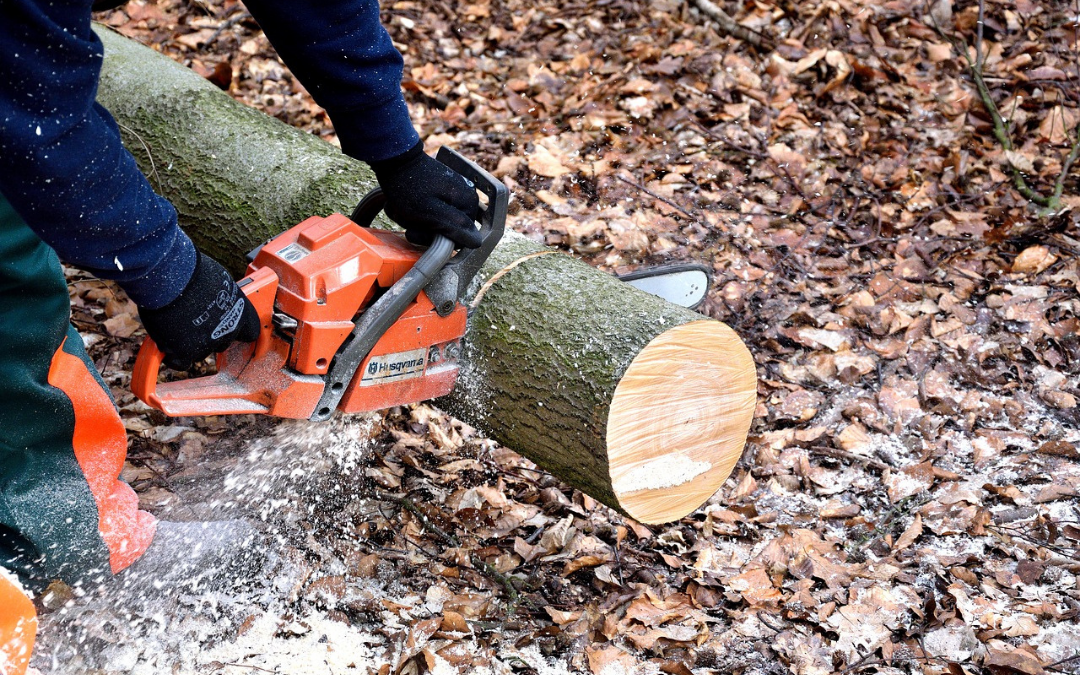As wonderful as trees are on a property, sometimes you want or need to get rid of them. They can present a danger to your home (leaning dangerously or dying), block the sun too much, or not fit in in some other way. We don’t recommend DIY tree removals. Instead, specialists should do tree removal, especially if the tree is large or in a complex area (such as next to power lines or a road). It’s always wise to estimate costs ahead of time to get a rough idea of the total removal cost. This article is an in-depth explanation of how cost estimation for tree removal works. Read on to find out all about it!
Average Tree Removal Cost
The average tree removal cost can vary widely, depending on the size and height of the tree and how complex the removal operation is. Here is a general cost estimation for tree removal based on the most important factor – the size:
| Tree Height | Removal Cost |
| Up to 25 feet tall | $200 – $500 |
| 25 to 75 feet tall | $200 – $1,000 |
| 75 feet tall or larger | $1,500+ |
Cost Factors of Tree Removal
Several factors determine what it will cost to remove a tree. The first, of course, is how tall it is. The taller the tree, the more planning, care, and time it will take to remove it. This is especially true if the tree is close to the street, power lines, or neighboring buildings. A 30-foot tree is unlikely to cause much property damage if it falls, while an 80-foot oak can quite literally wreck a home. Even a limb falling from such an oak can cause severe damage to a roof or vehicle. If the operation is complicated, such as when a tree is leaning dangerously, that will also increase costs. In such cases and others, a crane may be required, adding to the final removal fee. Extra services such as stump removal, limb chipping (or mulching), log splitting (for firewood), and trunk removal (if not included in the base fee) will run you extra. Finally, if you’re in a remote area, the tree specialists may ask you to cover travel costs.
Crane Assisted Tree Removal Cost
If the tree requires a crane to remove it, expect to add around $500 to the final cost estimation for tree removal. Daily crane rentals may cost you anywhere from $200 to $500, depending on the crane’s size and make. You can also expect a $50 to $100 charge for the crane operator.
Removal Cost by Tree Type
Here are some rough estimates for the removal cost by tree type. The range is wide, but remember that costs vary greatly depending on the tree size. Refer to the estimate above to get a rough idea of how much it would cost to remove trees of different sizes. Generally, hardwoods will be more expensive to remove, while softwoods – less so.
| Tree Type | Removal Cost |
| Pine Tree Removal Cost | $200 – $1,500+ |
| Oak Tree Removal Cost | $200 – $2,000+ |
| Maple Tree Removal Cost | $250 – $2,000+ |
| Ash Tree Removal Cost | $250 – $1,800+ |
| Palm Tree Removal Cost | $200 – $1,500+ |
| Cedar Tree Removal Cost | $200 – $1,500+ |
Fallen Tree Removal Cost
The good news is that if a tree has fallen over on your property, the cost to remove it will be substantially less than the cost to cut it down. That’s because it’s much less dangerous and less time-consuming work. In many cases, the removal company can also make some money by selling the fallen tree for further processing (or doing it themselves). The average cost to remove a fallen tree is between $75 and $150, although if you’re in a remote area, extra travel costs might apply.
How Much Does It Cost to Remove a Tree Stump?
Tree stump removal is usually not included in the base tree removal service. To remove a stump, you’ll have to pay extra. The bad news is that, depending on the size of the tree (and therefore the stump), the tree removal company may not have the equipment needed to remove the tree themselves. In such cases, sub-contractors are often brought in to do the job. This adds to the price, but, in general, you can expect to pay between $50 and $350 per stump. A large, healthy oak or maple stump with deep roots will be difficult and cost more to remove than the stump of a small, decorative tree.
Cheapest Time of Year for Tree Removal
There is the cheapest time of the year for tree removal – when work for tree removal services is slow, availability is higher, and prices are lower. Can you guess when that is? If you guessed winter and early spring, you’re right. The sap has descended for the tree’s dormant months, meaning that the limbs are less heavy. This is in addition to the leaves and fruit being gone. Apple trees, for example, are most at risk of breakage when they’re laden with fruit.
Similarly, leaves catch the wind, and summer and autumn storms are yearly culprits for tree emergencies. That’s why, if possible, you should plan tree removal around the winter months (after the leaves have dropped and the stormy season, if your area has one, has passed) or early spring, before the sap rises and trees wake up. That’s when you might be able to get a better cost estimation for tree removal – either straight off the bat or after a bit of negotiating.

